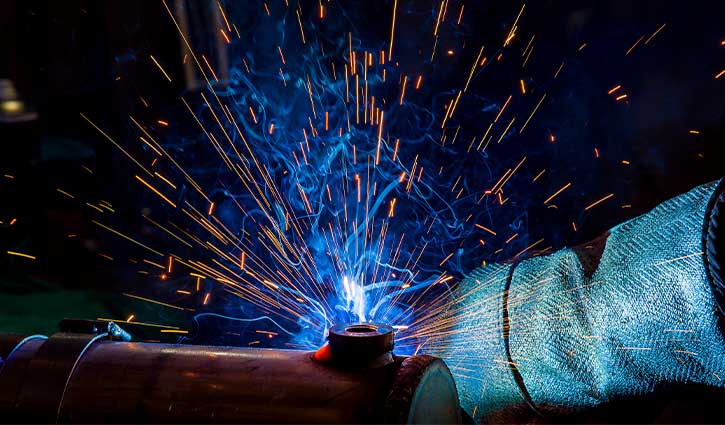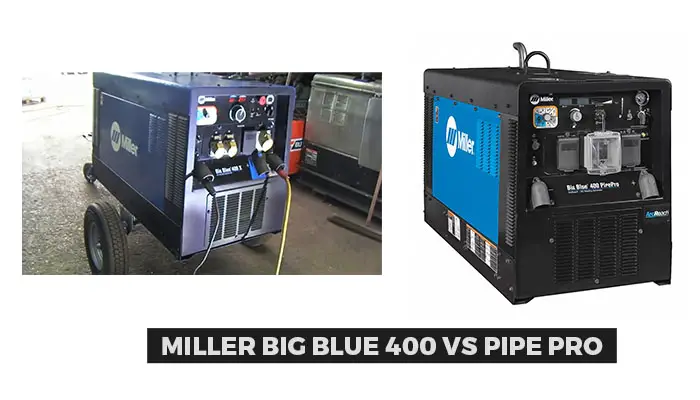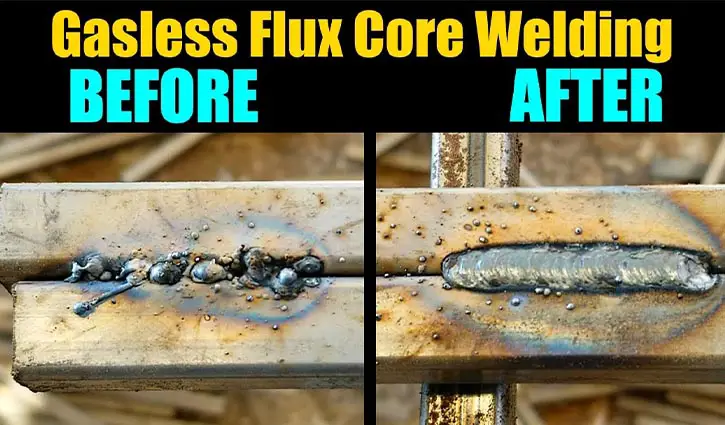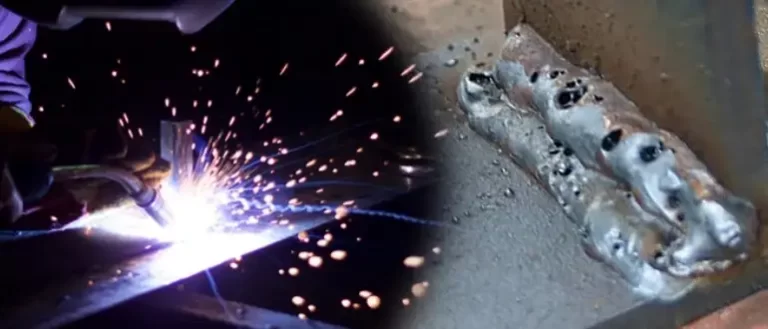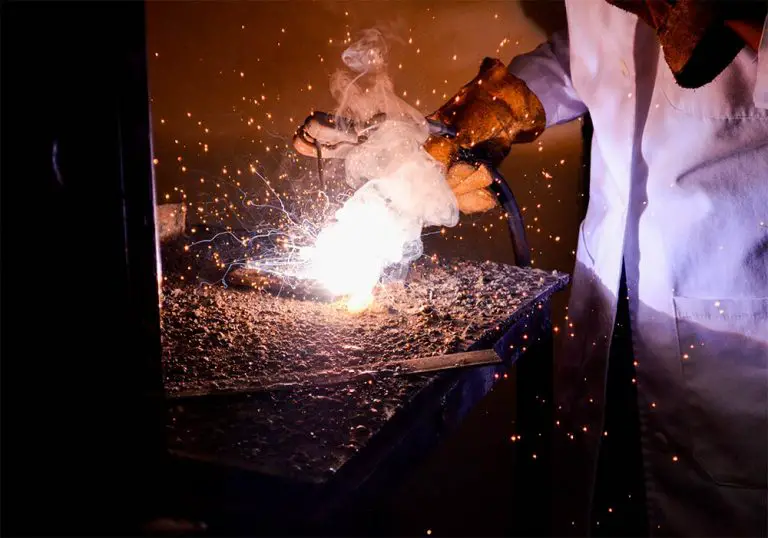Miller Digital Infinity vs Lincoln Viking 3350 (Comparison)
Welding tasks possess harmful rays and bright lights. That’s why every mechanic to deal with arcs uses protective helmets.
But cheap or random headwear can’t save your eyes. Smart individuals choose brand helmets for a reasonable price.
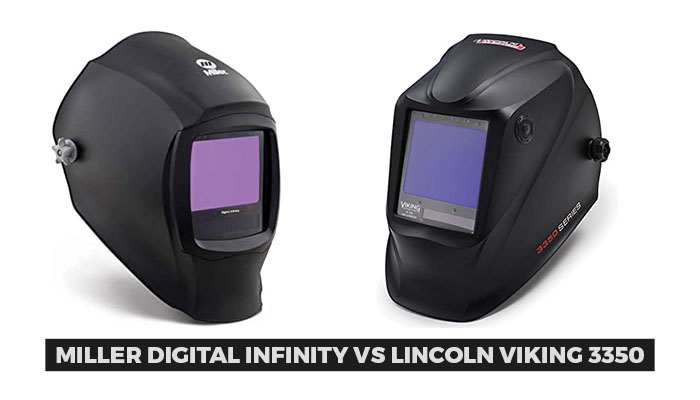
Miller’s Digital Infinity and Lincoln’s Viking 3350 have many great features. No wonder why these two are quite popular.
Still, choosing one helmet can often get difficult. Getting through Miller Digital Infinity vs. Lincoln Viking 3350 can surely help.
Let’s get started with the tabulated comparison of the two.
Table of Contents
Comparison Table – Digital Infinity vs Viking 3350
| Feature | Digital Infinity | Viking 3350 |
| Weight | 23-oz (652g) | 21-oz (595g) |
| Lens Technology | ClearLight | 4C |
| Viewing Area (in2) | 13.4 | 12.5 |
| Optical Clarity | 1/1/1/2 | 1/1/1/1 |
| Shades | 5 – 8 (Cut)8 – 13 (Weld) | 5 – 13 |
| Shade Control | Internal | Internal |
| Switching Speed (sec) | 1/20,000 | 1/25,000 |
| Delay Time (sec) | 0.1 – 1.0 sFull Adjustment | 0.1 – 1.0 sFull Adjustment |
| Arc Sensor | 4 – Weld, Cut, Grind, X-Mode | 4 – Weld, Cut, Grind, X-Mode |
| External Grind Control | No | Yes |
| TIG Amp Rating | ≤ 5A (AC/DC) | > 2A (AC/DC) |
| Battery Requirement | CR2450 | CR2450 |
Miller Digital Infinity vs. Lincoln Viking 3350
There are differences and similarities within the series. But you can’t pick based on their side-by-side comparison. Checking into the overview of each headwear series can provide a better understanding.
Miller Digital Infinity
The professional welding helmet comes with many high-end features. It’s a great purchase to enjoy superb practicality within budget. The design puts particular emphasis on transmission, color, and view.
Featured ClearLight Lens tech optimizes overall clarity and light contrast. The 1/1/1/2 optical rating allows a soft state when not in use. There are digital controls to adjust shade, delay, and sensitivity.
A Gen-3.5 headgear with a soft cushion delivers maximum wearing comfort. Four integrated arc sensors enable four different working modes. The X-mode eliminates sunlight interference and arc blocks.
Additional AutoSense skips any issues related to workplace sensitivity. Its system even enables the tracking of multiple parameters. Also, you can check for its optional helmet accessory kit for safety.
Pros and Cons
Lincoln Viking 3350
The updated helmet can perform its function well enough. It comes with several impressive features for your clear view. The wearable integrates the best optical clarity for all four visibility categories.
Featured 4C Lens tech optimizes the welding clarity against minimal green tints. Likewise, there are four high-tech sensors for your eyes. Chances to encounter sudden flashes or blind spot remains minimal.
Its auto-darkening system also protects your eyes from UV-ray exposure. Meanwhile, the std 1/1/1/1 rating maintains constant clarity. Its special X6 headgear is comfortable due to its weight distribution.
Steady shading at every angle enables easy welding in any position. Again, you won’t face any trouble adjusting or changing the modes. You can even install a cheater lens externally with its true compatibility.
Pros and Cons
Miller Digital Infinity vs. Lincoln Viking 3350: Similarities
Weight:
The weight rating is numerically different from one another. But the masses are low and close enough to give no particular distinction. You can barely feel any difference between the two’s weights.
Design:
Either one has multiple designs for purchase under the model number. Viking 3350 features 13 designs, whereas Infinity has 7 different options. Choosing the right one is up to your taste and style.
Shade:
Available shading level counts 5 – 3 with either one. You’re to activate levels 5 – 8 for cutting tasks and 8 – 13 for welding jobs. Meantime, included shade control remains internal for both helmet series.
Delay:
Also, the delay time remains from 0.1s up to 1.0s on either helmet. However, the same range can result in different delay times. Nonetheless, the system is fully adjustable to cope with your needs.
Sensor:
There are 4 standard arc sensors resent in both safety gears. Weld, grind, cut, and X-mode – you’re to change the modes. But the mode performance may vary due to other related factors.
Battery:
Either one requires a Li-ion CR2450 battery to run the device. And the helmet designs allow eventual battery replacement. But there’s an extrasolar cell in 3350 to enable outdoor charging.
Read More: Lincoln Viking 3350 Vs Miller Digital Elite: A Comparative Discussion
Miller Digital Infinity vs. Lincoln Viking 3350: Differences
Tech:
Infinity holds a ClearLight tech, whereas Viking features 4C tech for its lens. 4C can widen the light range to eliminate imperfections. And ClearLight optimizes the optical clarity in low-light states.
Comfort:
Viking includes a special X6 mechanism for its headgear. It reduces all the pressure points to distribute the weight. However, Infinity features a soft cushion inside to make you feel comfortable.
View:
Viking’s 12.5in2 viewing area is slightly lower than Infinity’s 13.4in2 area. More viewing area means further arc observation. The optical clarity rating is 1/1/1/2 in Infinity against 3350’s 1/1/1/1.
Speed:
Switching speed is somewhat higher in Digital Infinity. Its 1/20,000 sec speed is outmatched by Viking’s 1/25,000 sec. But such a small fraction can barely leave any visible influence during changes.
Amp:
The rated TIG welding amp remains less than 5A with Infinity. The intended rating is almost the same as Viking. However, you should maintain at least more than 2A welding current with 3350.
Grind:
The control is mostly internal for Viking except for the low-profile grind button. It lies on the outside to enable the simple turning of the knob. Meanwhile, there’s no such button on the exterior of Infinity.
Frequently Asked Questions
Answer: Yes, the solar power cell should work perfectly in Viking 3350.
Answer: Either tech is excellent, but ClearLight stands superior with a 1/1/1/2 rating.
Answer: No, the X-mode is only present in Digital Infinity for sunlight.
Wrapping Up
Infinity seems somewhat superior to 3350 for the most part. Viewing quality is excellent in the former compared to the latter.
But everything else is almost similar to giving you a protective shield against harmful elements.
Comfort and adjustment are other great factors for welding helmets. You must consider all criteria to finalize the purchase.
Read More: Lincoln 180C Problems & Solution (Explained)

